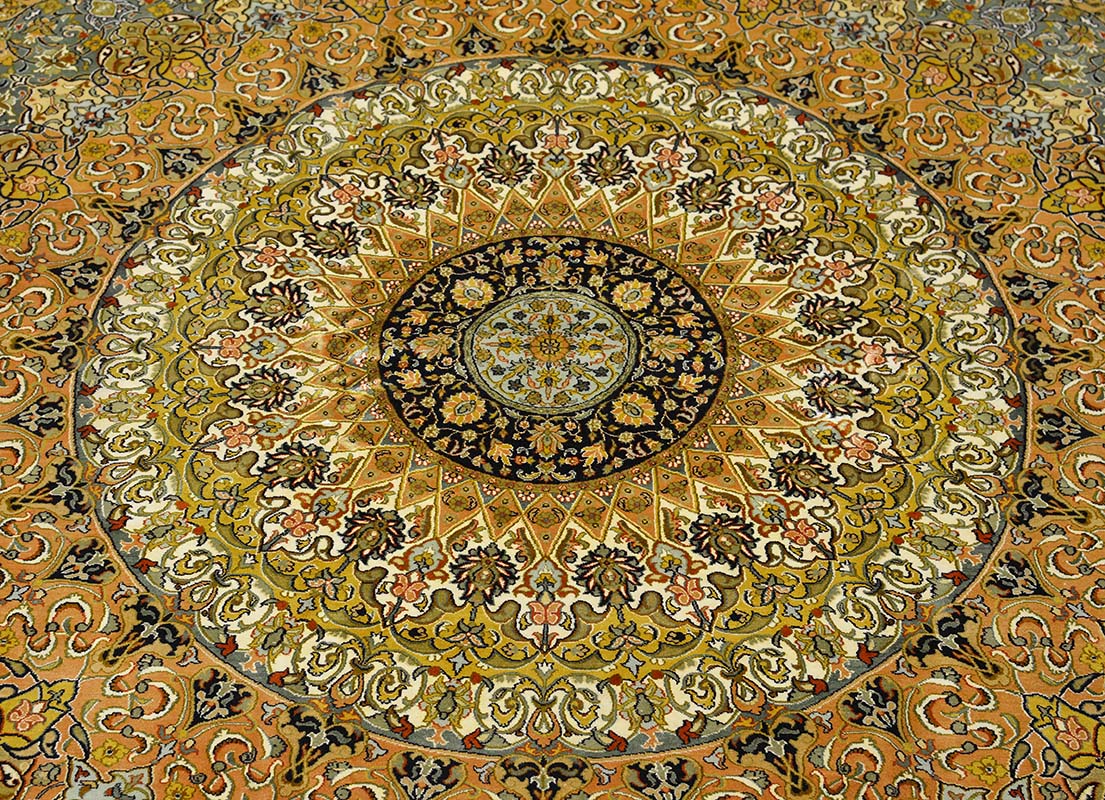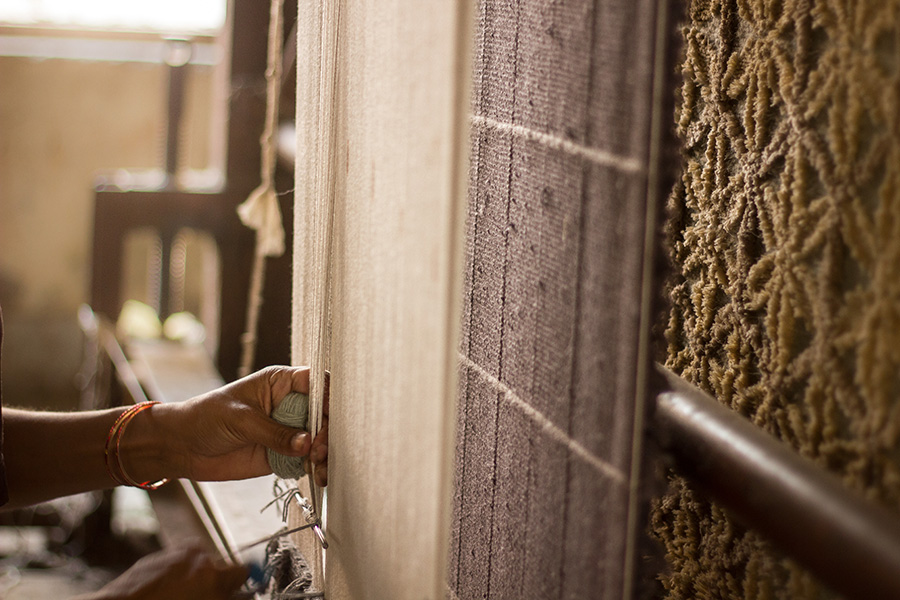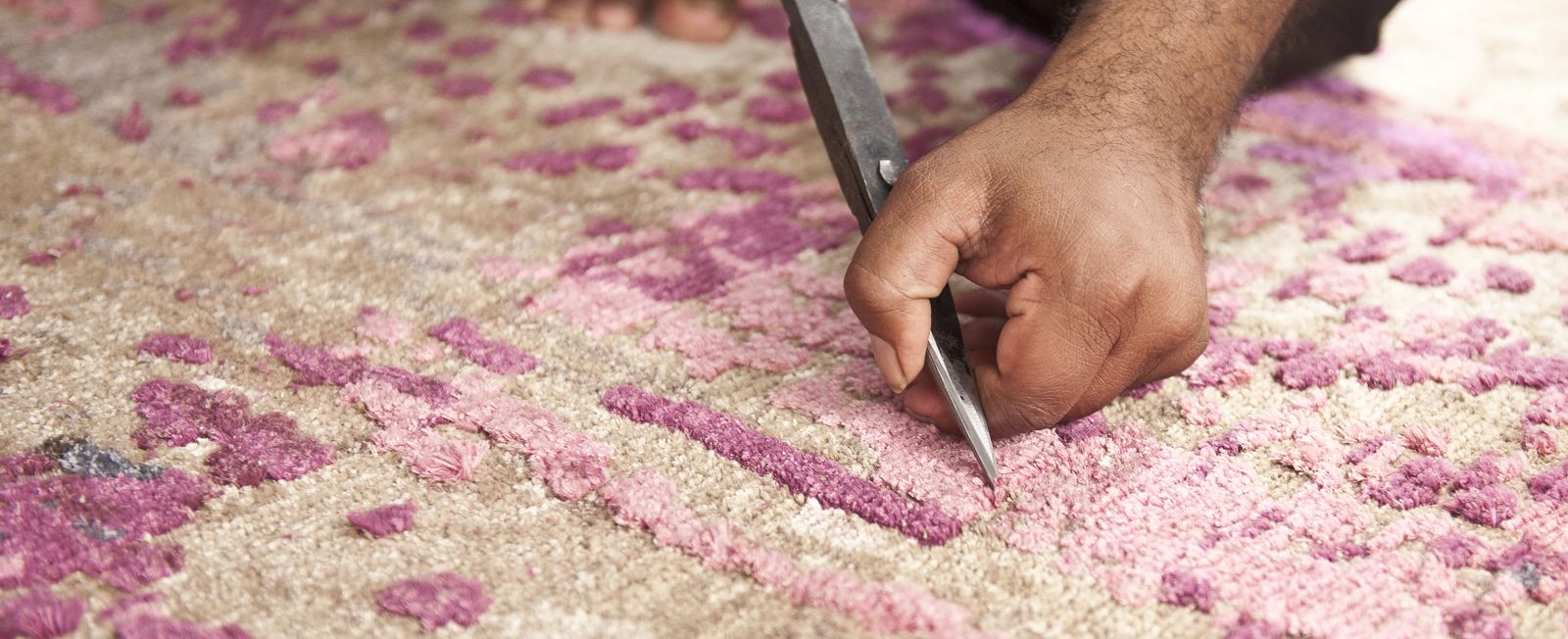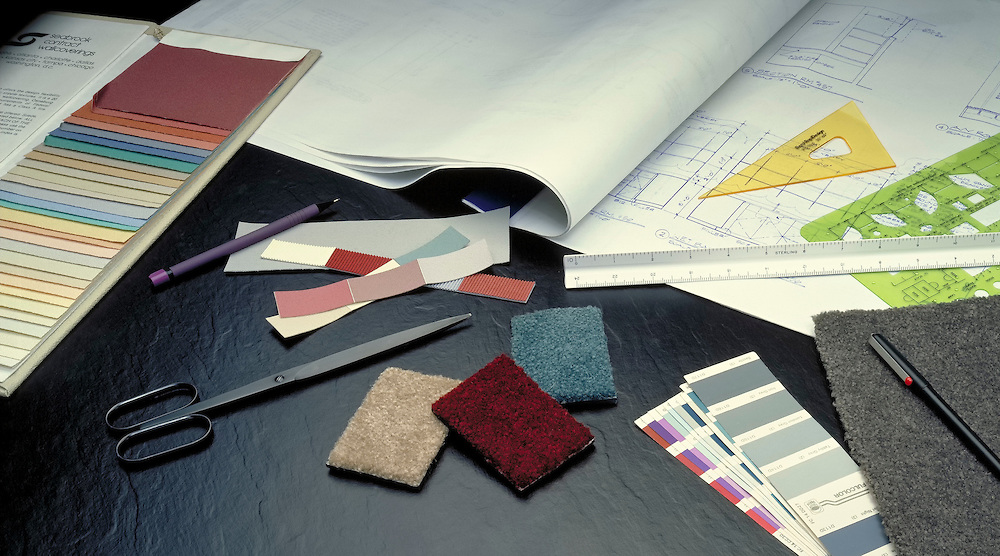
Hand Knotted Rugs
When you buy a hand-knotted rug, this means that a skilled weaver individually tied every knot, this creating a one-of-a-kind handmade rug. That is what makes hand-knotted rugs so special, and that is what makes them so much more expensive than all other types of area rugs. Depending on how many knots are in each square inch (60 to 180 knots it ), weaver to complete a 9x12 rug in 16-20 weeks it may also varies on Designs. Wool, silk and cotton are the three primary materials that are used to make a hand-knotted rug other than this we also consume different Yarn, Like Jasmine silk, Linen, Banana silk, Tencel , Art silk /Viscose, Handspun Bamboo (Tops) Pure Bamboo Yarn (Made of Wood pulp – Eco Friendly). Wool is the most used material. New Zealand often mixed with local wools because they have more strong fibers, which adds sheen, strength and suppleness. Silk is used primarily for accent because it is not as strong and is more expensive. Cotton is sometimes used in the foundation, but is not seen in the pile. The combination of these materials makes for an extremely strong rug. If the price of a silk rug sounds too good to be true, the rug is probably made of cotton. Ask the rug merchant to pull a strand of thread from the rug and burn. If it's silk, it will smell like burning hair. Burned rayon and cotton will smell like burned paper. Hand-knotted rugs can withstand high traffic, and will begin to wear out after 20 or more years of use. High traffic areas include hallways, family room and entryway. Medium traffic areas include the dining room and home office. Low traffic areas include bedrooms and formal living room.

The Hand Knotting Process
After the loom is set up, the warp (or vertical) threads are tied on the loom. These are the threads that eventually become the fringe of the rug. The weft runs horizontally and intertwines with the warp to create the foundation of the rug. The weft also creates the selvedges (or edges) of the rug, which hold the rug together. The knots, made of wool or silk, are then tied to the warp threads. The weaver uses a knife (or a hook) to cut the knot, ties the knot with his or her hands, and finishes the process by securing and tightening the knot with a comb-like tool. An experienced weaver can tie one knot every two seconds.

Hand Carving
Hand carving is sometimes referred to as embossing. Hand carving is the process of shearing areas of the rug pile to create a three-dimensional look. Typically, carving accentuates the design in the rug. This process is very difficult and is performed only by highly skilled artisans.

Tools of the Trade
A quality loom is the first thing that a weaver needs to make a straight rug. Country or nomadic rugs are often made on a horizontal loom and rugs made in factories are made on vertical looms. Looms range greatly in complexity and quality. Once set up at the loom, a weaver uses only a hooked knife (or gollab) to catch the yarn behind the warp threads and pushes it through to the face of the rug. The weaver then uses a comb (or beater) to tighten the rows of knots together. A scissors is also used to clip the threads evenly on the back of the rug. A skilled weaver can tie one thousand knots per hour.
There are two different kinds of knots that are used to construct a hand-knotted rug.
Persian Handknotted Pattern which is also known as old Tradtional rugs weaving and Tibetan handknotted carpets which is also known as Himalayan Pattern of rug weaving, which is Generally weaving in Tibet and Nepal.
